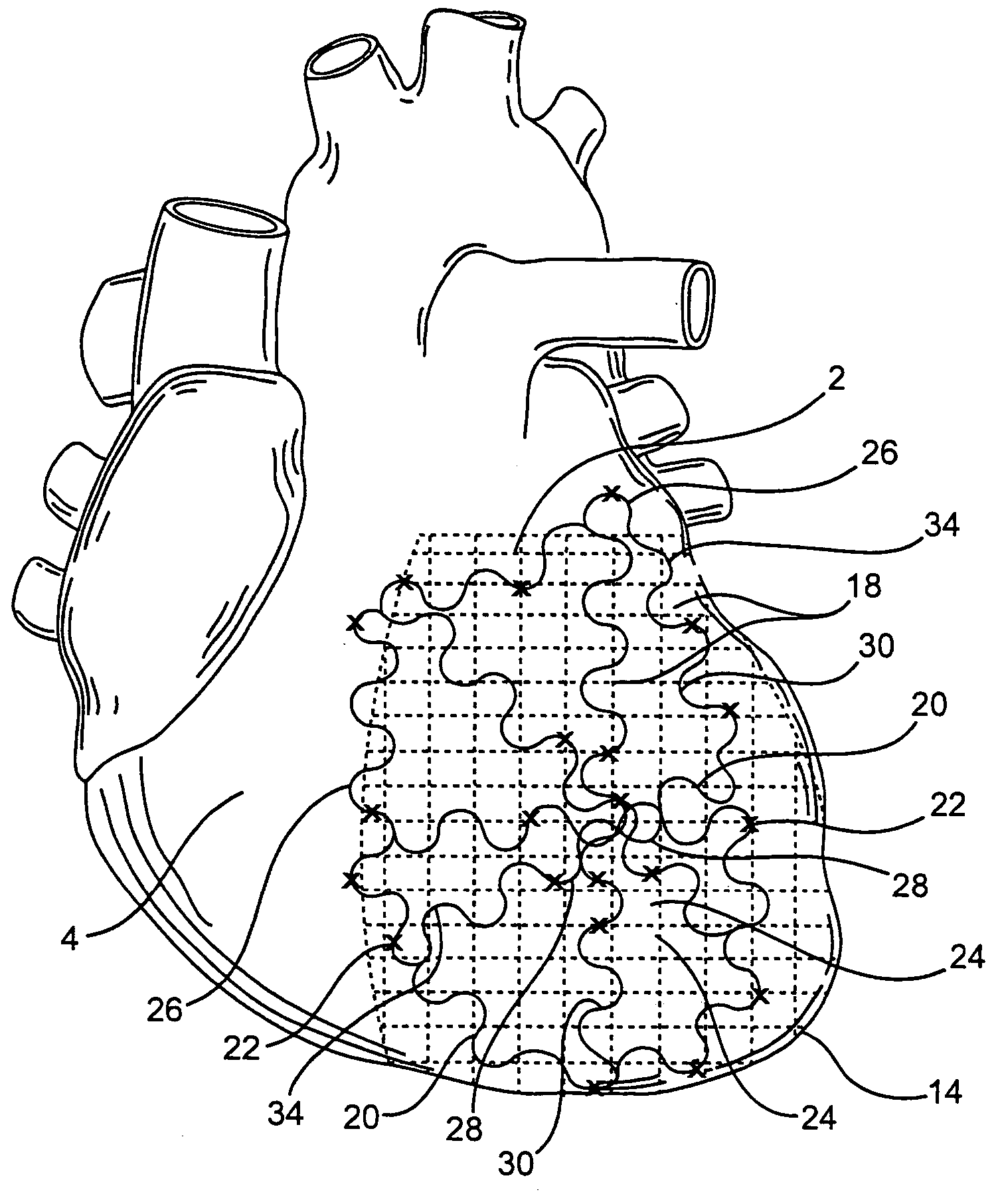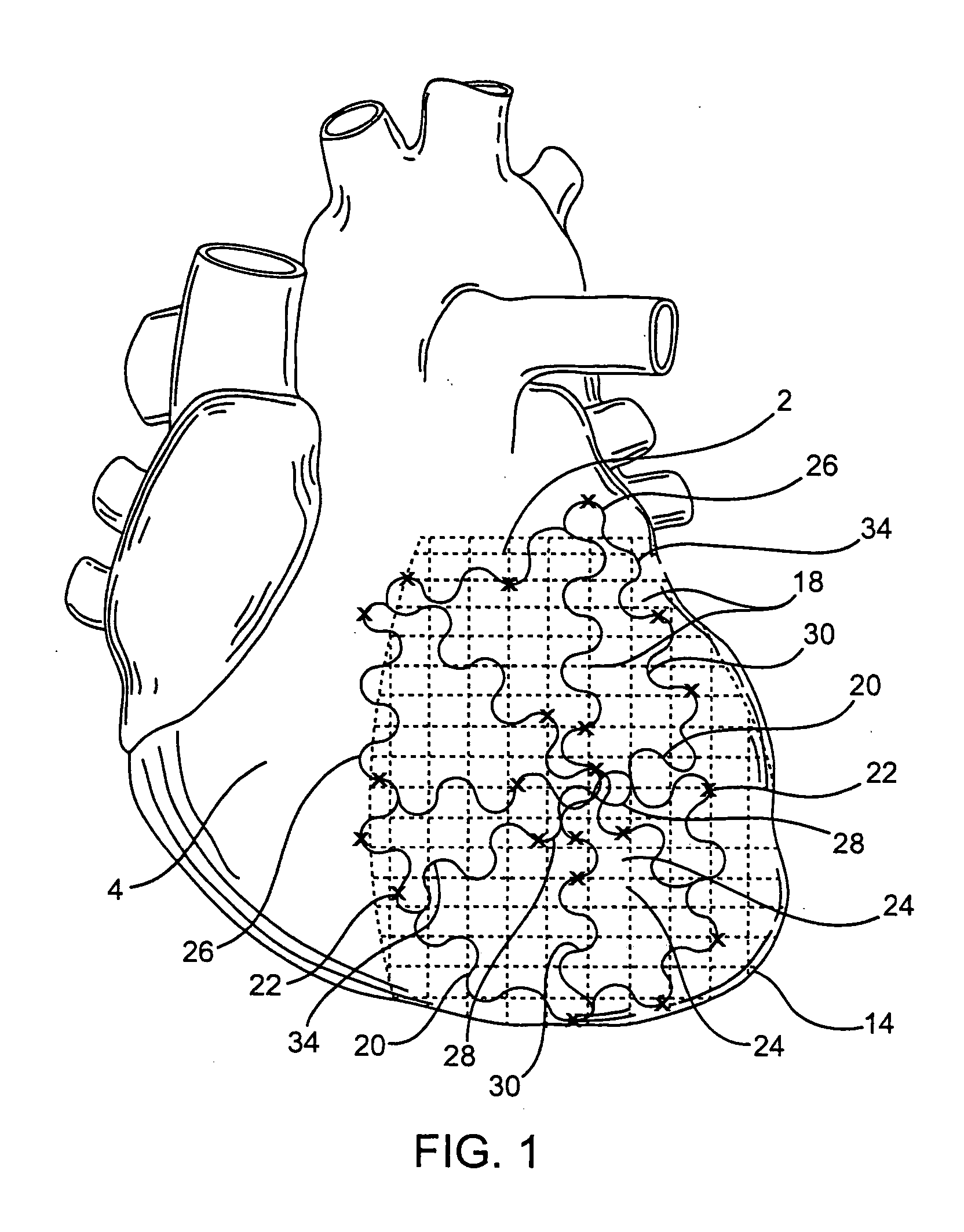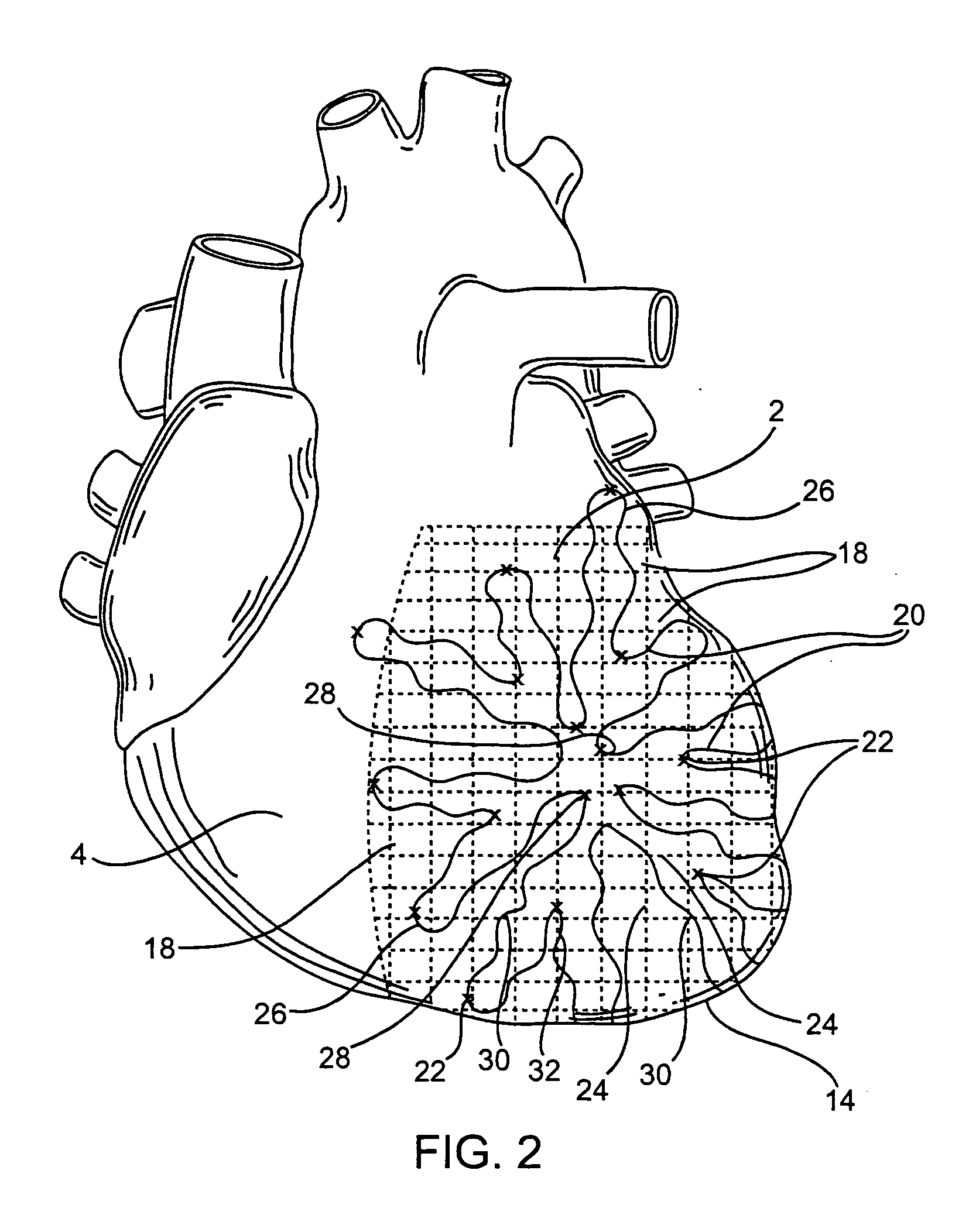Heart support to prevent ventricular remodeling
a heart support and ventricular remodeling technology, applied in the field of heart support to prevent ventricular remodeling, can solve the problems of discharging the pumping force of the heart, adversely affecting cardiac output, tissue remodeling over time, etc., and achieve the effect of reducing the end-diastolic diameter of the heart and preventing over-stressing of cardiac tissu
- Summary
- Abstract
- Description
- Claims
- Application Information
AI Technical Summary
Benefits of technology
Problems solved by technology
Method used
Image
Examples
Embodiment Construction
[0036] The embodiments of the invention are intended to transmit energy from viable tissue regions to less viable or non-viable regions thereby preventing, compensating for, or treating tissue responses to ischemia, infarction, or other abnormalities. Ischemic injury causes tissue remodeling over time and produces dyssynchronous, hypokinetic, dyskinetic or akinetic tissue function. The embodiments of the invention prevent, reduce, and / or delay remodeling of diseased cardiac tissue, and also decrease the impact of such remodeling on collateral tissue. The embodiments of the invention are also useful in reinforcing abnormal tissue regions to prevent over-expansion of the tissue due to increased afterload and excessive wall tension. The embodiments of the invention maintain and / or restore diastolic compliance, wall motion, and ejection fraction to preserve heart functionality. As such, the embodiments of the invention prevent progression of cardiomyopathy and congestive heart failure. ...
PUM
 Login to View More
Login to View More Abstract
Description
Claims
Application Information
 Login to View More
Login to View More - R&D
- Intellectual Property
- Life Sciences
- Materials
- Tech Scout
- Unparalleled Data Quality
- Higher Quality Content
- 60% Fewer Hallucinations
Browse by: Latest US Patents, China's latest patents, Technical Efficacy Thesaurus, Application Domain, Technology Topic, Popular Technical Reports.
© 2025 PatSnap. All rights reserved.Legal|Privacy policy|Modern Slavery Act Transparency Statement|Sitemap|About US| Contact US: help@patsnap.com



